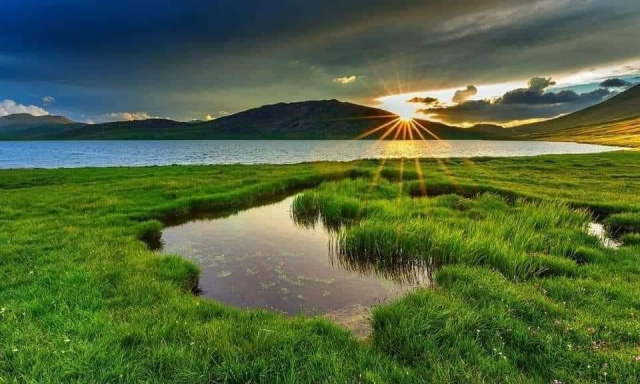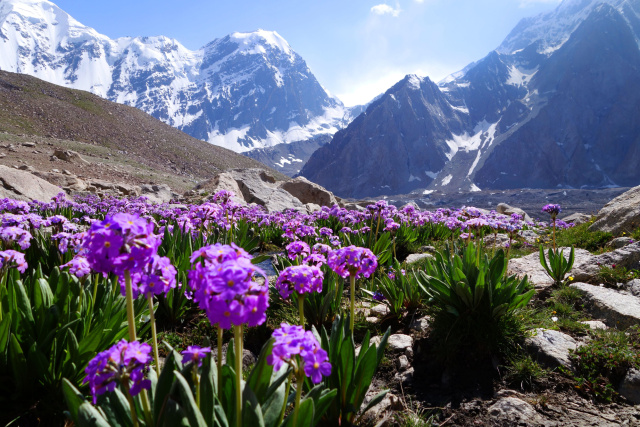Growing up in Buni, rural Pakistan
Chitral & Gilgit-Baltistan
Everything was natural. We grew up looking at the landscape around us, only had a few scattered households with a very small population. We heard the birds singing in the morning, and the screeches of owls by nightfall. We used to eat from the land, which we are still doing.
We enjoyed fresh fruits from the trees in the gardens, and because it’s a mountain region, we would drink the springwater, gushing out from the mountains.
As kids, we were very enthusiastic about cricket, and moved to green places in early spring, when the landscape transformed into a green grassy carpet. As young boys, we used to play cricket on the high altitude playgrounds surrounded by mountains, and it was like we had our very own natural environment, featuring greenery and unspoiled nature, that influenced our behavior in a way that is not easily forgettable.
This created our love for nature.

In Chitral, the sky is clear. We have four clear seasons—spring, autumn, summer, and winter. In autumn, the landscape has a different color, while winter is known for heavy snowfall, which makes everything white and beautiful. In spring, everything is green with a variety of flowers, and during summer, we have an abundance of fruits and crops.
Before modern values and the market economy reached this area, people had a sustainable life, on an individual basis. People used to cultivate for themselves. They used to hunt and store everything for winter. Nothing used to come from outside as there was no access road.
For example, in the absence of bridges, the old people used to be very strong swimmers. They used to take the support of a goat skin, fill it with air, and put it under the belly for support to cross the river from one side to the other.
My dream for the future of this region would be to protect the natural beauty, to minimize the adversity on natural life, flora, and fauna, and particularly the rare wildlife.
And also to educate people, especially young people, on how to manage modernization in relation to maintaining the natural beauty of the area, something that is very difficult to do. And for tourists and people visiting here to take only pictures, and leave only footprints.


Shams Uddin
Everything was natural. We grew up looking at the landscape around us, only had a few scattered households with a very small population. We heard the birds singing in the morning, and the screeches of owls by nightfall. We used to eat from the land, which we are still doing.
We enjoyed fresh fruits from the trees in the gardens, and because it’s a mountain region, we would drink the springwater, gushing out from the mountains.
As kids, we were very enthusiastic about cricket, and moved to green places in early spring, when the landscape transformed into a green grassy carpet. As young boys, we used to play cricket on the high altitude playgrounds surrounded by mountains, and it was like we had our very own natural environment, featuring greenery and unspoiled nature, that influenced our behavior in a way that is not easily forgettable.
This created our love for nature.

In Chitral, the sky is clear. We have four clear seasons—spring, autumn, summer, and winter. In autumn, the landscape has a different color, while winter is known for heavy snowfall, which makes everything white and beautiful. In spring, everything is green with a variety of flowers, and during summer, we have an abundance of fruits and crops.
Before modern values and the market economy reached this area, people had a sustainable life, on an individual basis. People used to cultivate for themselves. They used to hunt and store everything for winter. Nothing used to come from outside as there was no access road.
For example, in the absence of bridges, the old people used to be very strong swimmers. They used to take the support of a goat skin, fill it with air, and put it under the belly for support to cross the river from one side to the other.
My dream for the future of this region would be to protect the natural beauty, to minimize the adversity on natural life, flora, and fauna, and particularly the rare wildlife.
And also to educate people, especially young people, on how to manage modernization in relation to maintaining the natural beauty of the area, something that is very difficult to do. And for tourists and people visiting here to take only pictures, and leave only footprints.

You might like...

Autumn Colours of Pakistan

Birds of Gilgit-Baltistan

Seasons of the Chitral Valley

Qaqlasht Plateau
Newsletter
Sign up to keep in touch with articles, updates, events or news from Kuno, your platform for nature
